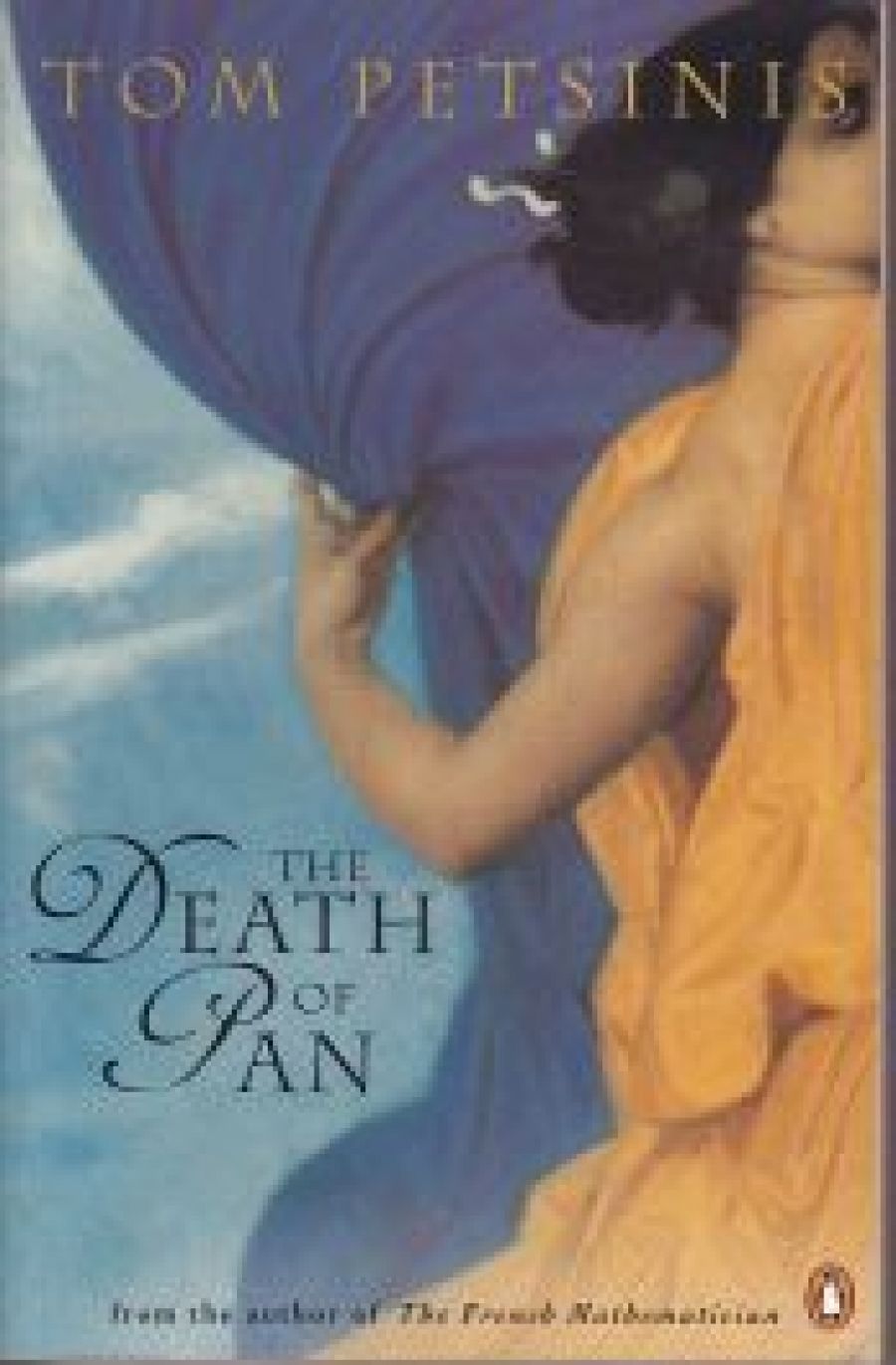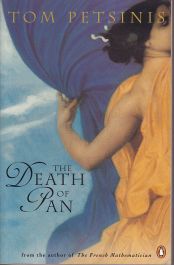
- Free Article: No
- Contents Category: Fiction
- Review Article: Yes
- Article Title: You Who
- Online Only: No
- Custom Highlight Text:
Between the two poles of first-person narration and the inaccurately named ‘third-person’ narration lies another, rarely glimpsed, possibility. This is second-person narration, and it is something of a freak: Michel Butor’s La Modification and Jay McInerney’s Bright Lights, Big City are among the rare examples.
- Book 1 Title: The Death of Pan
- Book 1 Biblio: Penguin, $22.00 pb, 239 pp
- Book 1 Cover Small (400 x 600):

- Book 1 Cover (800 x 1200):

Toward the end of your final year at high school, several days before the commencement of the examinations that would not only decide university entrance but determine irrevocably the course of your life, you stunned family and friends by announcing your intention to abandon study in order to become a circus performer, more precisely, a professional lion tamer.
The first impulse here is to imagine that you are being addressed yourself, that ‘you’ are the lion tamer. But who is speaking? This could be a very matter-of-fact dialogue in which an as-yet unrevealed ‘I’ addresses the ‘you.’ But there is also a sense that it is the ‘you’ who is, as it were, speaking; that the dialogue here is an entirely self-enclosed one.
While these things tend to be clarified by context, the second-person form is inevitably haunted by ambiguity. To address yourself as ‘you’ is at best eccentric, at worst suggestive of madness. Getting into a dialogue with yourself is the ultimate solipsism.
Each of the stories in Petsinis’s new book is written in this unusual narrative form. In that respect, it can be seen as sharing an idea with his novel The Twelfth Dialogue (2000), which set up a context for a series of dialogues that were otherwise largely unrelated. And in the obsessive, near-madness of the ‘you’-narrators, we are not far from the world of Evariste Galois, the first-person speaker in The French Mathematician (1997). Some of the logical ramifications of the earlier books are formally brought out here: the solipsism of a figure like Galois made concrete in the very mechanism of the telling itself. It is almost a guarantee that those who liked the earlier books will be satisfied with this latest one, while finding many new things.
This, then, is a coherent collection of stories. Most of the stories begin, almost programmatically, in the way that ‘The Lion Tamer’ does. The peculiar, solipsistic voice more or less calmly introduces a potentially mad act such as abandoning your studies for the circus. ‘Falling suddenly into the turbulence of adolescence,’ one begins, ‘you might well have been swept away and dashed to pieces … ’ Another goes: ‘Approaching thirty, you have recently become susceptible to the current of time — a sensation not unlike that of being irresistibly drawn to an abyss.’
Petsinis has typically been concerned with Romantic and post-Romantic thought, but ranges further here. ‘Charcoal and Blood’ begins: ‘A member of a Palaeolithic tribe, you were naturally enough a hunter ... ’ Or: ‘You were born in Constantinople, a city which, at the time, seemed to be located midway between a flat earth stained by sin and a domed heaven leafed with gold ...’ Wherever in time or space the stories range, however, the preoccupations are particularly with the life of art. ‘Charcoal and Blood’ is about the dilemma of the hunter who chooses, instead of hunting animals, to paint them. How is this artistic radical to live, if he is not pulling his weight hunting? Why should he be allowed some of the meat he has not helped to procure? And, in Constantinople, this narrator, deciding to become a chanter, devotes himself to years of rigorous, monastic discipline in the desert in pursuit of his craft. When, at last, he is summoned to chant before the empress in the church of Hagia Sophia, his long-held dream completes itself in an unforeseen way.
The stories have an unvarying tone because of the narration. Second-person narration can be a dangerous weapon; it is easy for its ambiguities to become predictable. And it is true that there is no apparent interest in differentiating the story beginnings here. Some of the story openings seem almost impatient to impart the basic information before getting on to the playing out of the dilemma. But what saves the collection is the range of settings, the various takes on the same dilemmas of the life of art. Whether it’s Constantinople, the palaeolithic period, modern Melbourne or the strange fable- territory of the title story (one of the most haunting in the collection), something new is given to essentially the same story. That tale is the struggle of the individual in a new generation to define himself artistically and/or intellectually against an older generation, in which there is often a beckoning but potentially dangerous tutelary figure and a father whose middle way leads to safety but also mediocrity (the story of ‘The French Mathematician’).
These stories should satisfy Petsinis’s existing readers. But they would also make a perfect introduction to his obsessions for those new to his work. In the context of cultural moronism, the retreat of well-constructed dramas before the surveillance camera, the swamping of literature by the dilemmas of the dateless, it is a relief that someone can ignore the dull clangour of reality to produce these enchanting fables.


Comments powered by CComment